2021 Magna Awards: Grand Prize
Amid the pandemic, these district programs shine through
School districts both small and large across the country are removing barriers for students. The three Grand Prize 2021 Magna Award winners exemplify school district innovation and creativity in achieving educational equity.
For more than 25 years, the Magna Awards have recognized innovative school district programs. This has not been a normal year. Our winning programs—the Grand Prize winners and the first-place winners—represent the enormous efforts of school leaders and district staff to continue during the pandemic to remove barriers to achievement for their underserved and vulnerable students.
We present these winning programs with the hope that you will discover information that you can use in your districts, especially during these times of crisis. Our profiles give you an overview of the programs, including evidence of success. We include district contact information so you can find out more from the school leaders and staff who manage these initiatives.
We also created an opportunity for you to learn from the three Grand Prize-winning districts. They will be presenting their equity programs at NSBA’s online Annual Conference April 8 through 10.
We invite you to connect with your peers to gain insights and practical ideas to create more equitable schools for your students.
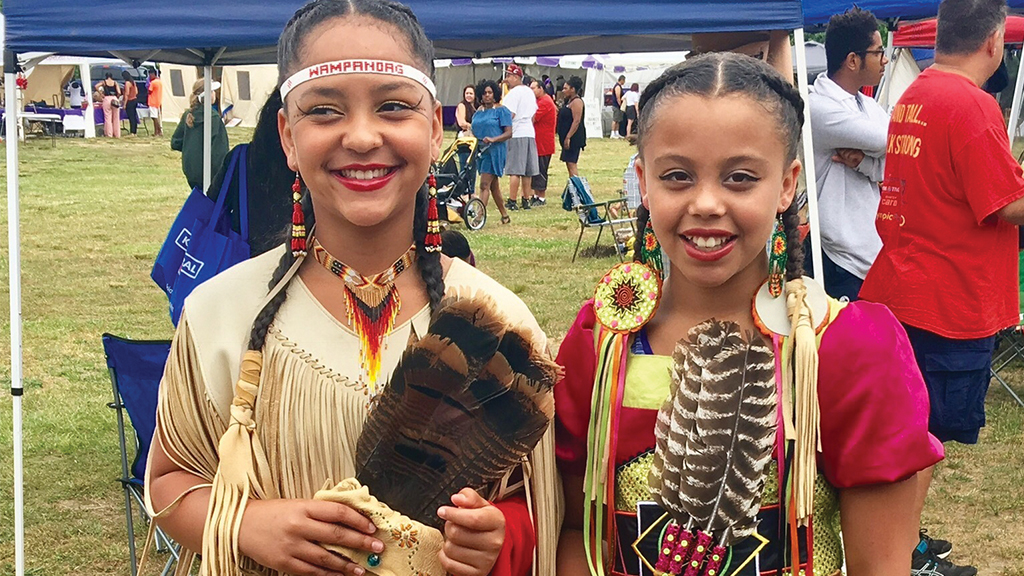
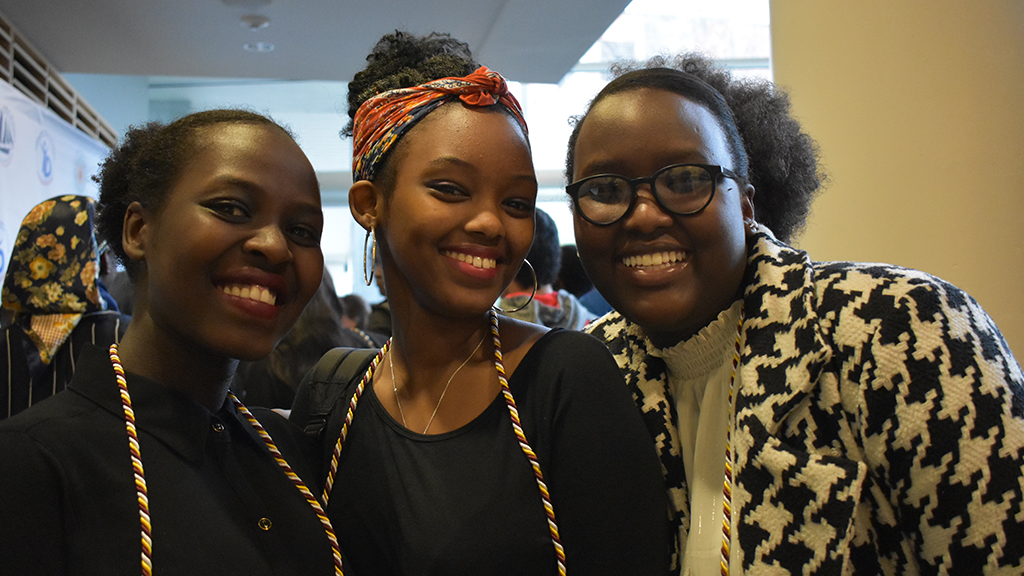
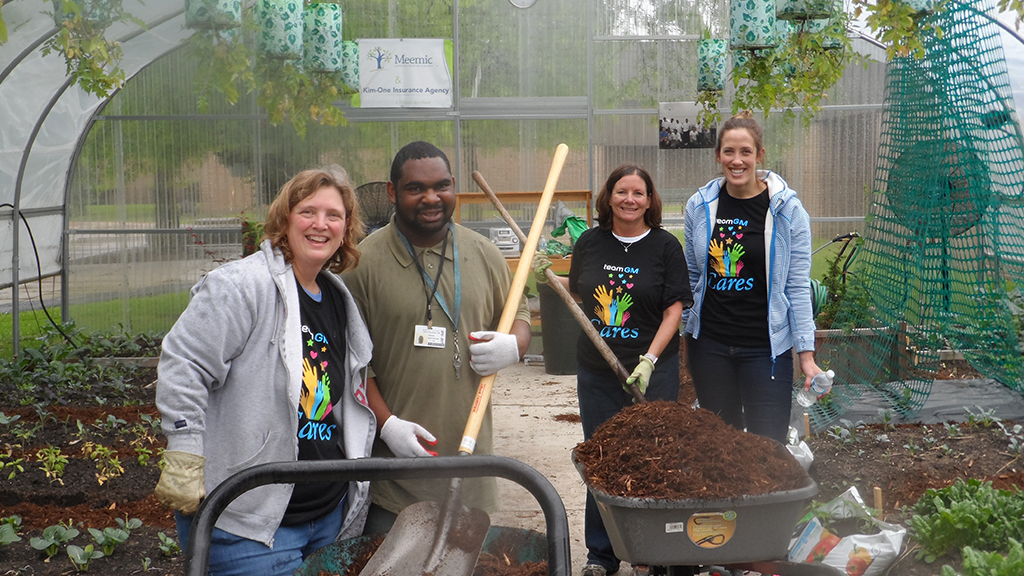
Mashpee Wampanoag Tribe Partnership
Mashpee Public Schools
Mashpee, Massachusetts
Under 5,000 enrollment
Archeological evidence shows the presence of Wôpanâak (Wampanoag) in Cape Cod, Massachusetts, for at least 12,000 years. The Mashpee Wampanoag Tribe is one of the original 69 tribes comprising the Wampanoag Nation. The Wampanoag were the native people encountered by the English colonists in the 17th century, participating in the mythologized First Thanksgiving story. The tribe’s current enrollment is just over 2,800 people, the majority of whom still live in or near the town of Mashpee.
About 10 percent of Mashpee Public Schools students are Native American. Research shows that most native students in the U.S. trail their peers in achievement, attendance, and postsecondary readiness. In 2017, the district created a formalized working partnership with the tribe to create an inclusive school district in which the tribe’s rich heritage and culture are recognized and celebrated and in which the academic growth and social-emotional well-being of the Mashpee Wampanoag students are advanced through an emphasis on culture-based education principles and practices.
“Our goal is to ensure the success of every child,” says Mashpee School Committee Vice Chair Nicole Bartlett. “With native students a significant portion of our population, Mashpee has a responsibility to address native student needs.”
Bartlett, who serves as the northeast region director on NSBA’s National American Indian/Alaska Native Council of School Board Members board of directors, initiated the partnership after being elected to the board in 2017.
Members include Mashpee’s district and school-based leaders, including a school board member, and tribal members/leaders. The partnership meets quarterly to sustain and provide shared ownership. During regular joint meetings of the Mashpee School Committee and the Tribal Council, the partnership’s goals and accomplishments are publicly discussed and shared.
Members of the tribe provide professional development for teachers on how to support and understand native students’ culture. Teachers learn, for example, that when native students don’t make eye contact, they are showing respect, not disrespect. Tribal elders work with the district and families on some disciplinary issues, including attendance and tardiness.
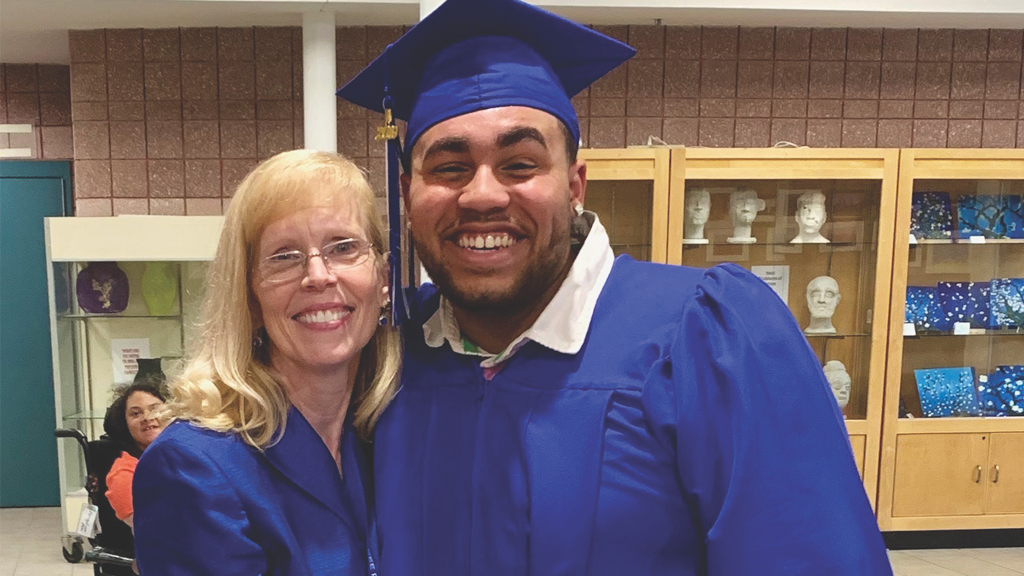
Marshpee Superintendent Patricia DeBoer at the high school graduation. PHOTO COURTESY OF MASHPEE PUBLIC SCHOOLS
“There’s a history in this town,” says Mashpee Superintendent Patricia DeBoer. “Some native people did not have the most positive experience in school. You are dealing with those same students who are now parents, and there’s a trauma to get past.”
The partnership works on making native students and their families feel accepted and heard. The district now offers Wampanoag language courses in middle school and high school. The flags of the tribe fly outside school buildings.
“The district has worked extremely hard to put those things in place,” says Roxanne D. Mills Brown, director of education for the Mashpee Wampanoag Tribe. Brown, who worked for federal Bureau of Indian Affairs for 25 years before that, says Mashpee is an example that other districts in the area use as a model.
One highly visible item that comes from the partnership is the Land Acknowledgment poster. This poster is displayed in all district classrooms and common areas. It reads in English and in the Wampanoag language: “The Mashpee Wampanoag welcome you to our traditional homeland. The Mashpee Public Schools recognize and honor the many generations of Wôpanâak people who have lived and been sustained in this territory for more than 10,000 years.”
Ellen Holmes, 2021 President of the Massachusetts Association of School Committees, says, “The reinvigorated partnership between the Mashpee Public Schools and the Mashpee Wampanoag Tribe demonstrates how public schools across the commonwealth are leading by example, putting student equity at the forefront of district priorities and connecting their communities through our most valuable shared resource: our children.”
Make it Happen
Portland Public Schools
Portland, Maine
5,000 to 20,000 enrollment
Portland, Maine, was designated a refugee resettlement city by Catholic Charities’ Maine Refugee and Immigration Services. As a result, the city and the Portland Public Schools are the most diverse in the state: 34 percent of Portland schools students speak a language or languages other than English at home. There are over 60 languages spoken, including Acholi, Arabic, French, Khmer, Lingala, Portuguese, Somali, Spanish, and Vietnamese.
Make It Happen! (MIH) is a college readiness program designed for Portland’s high school multilingual and English learner (EL) students. Through the program, students work with site coordinators, volunteer academic coaches, and community partners to build competitive academic profiles for college admission and learn how to navigate and access financial aid. Students are encouraged to take challenging classes, improve their standardized test scores, and engage in leadership activities, community service, and career readiness opportunities.
“Ultimately, we are a college readiness and academic support program for multilingual students,” says Tim Cronin, MIH director. “We do what any parent would do, but we have the advantage of being in the school.”
Each of the three district high schools has an MIH hub where the staff operates academic coaching centers. They work with guidance counselors and teachers to give them support for coursework, course selections, standardized test preparation, and college application support. “We are there with them every day, console them when things don’t go well. We hold them to a high standard of work performance, personal integrity, and dignity.”
The centers also serve as social hubs where students can experience a sense of belonging, meet with their friends, and check in with staff. “That sense of community is critical,” says Cronin.
Volunteer academic coaches from the community come to the centers to tutor students who need extra help. The program staff assists students in obtaining college financial aid and takes them on college visits. Community groups encourage civic engagement. Some of the MIH students get involved with city government and the school board.
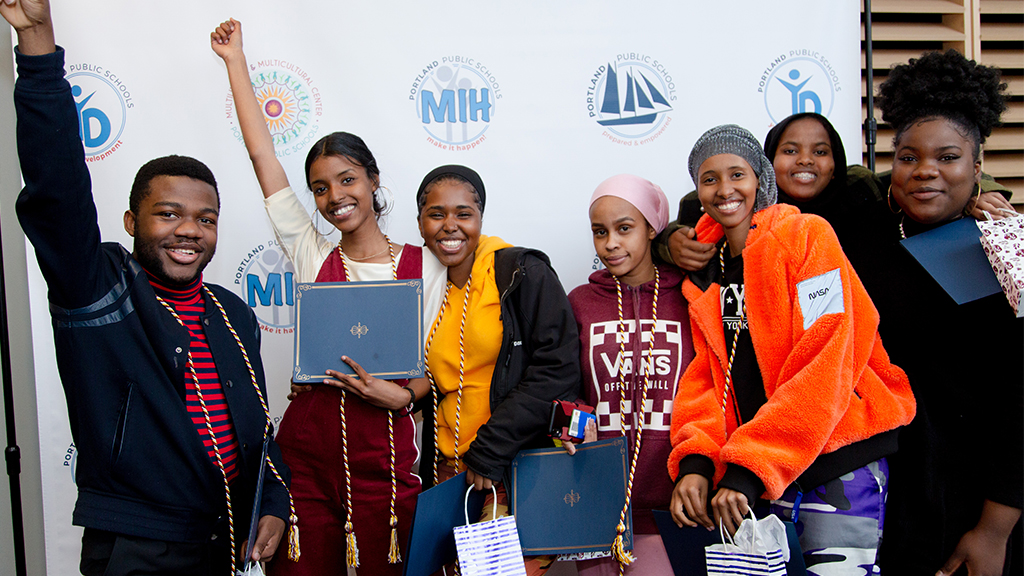
Make It Happen supports high school students so they can graduate and go on to higher education. PHOTO COURTESY OF PORTLAND PUBLIC SCHOOLS
Grace A. Valenzuela, the district’s executive director of communications and community partnerships, started the program in 2007 when she was director of the district’s Multilingual & Multicultural Center. Valenzuela, who is herself a multilingual learner and an immigrant, responded to student feedback that EL students were not challenged or supported enough in high school to achieve at high levels.
“Education takes a village,” says Valenzuela. “It’s not only the work of the school and teachers. It’s the work of the school in partnership with parents and with community organizations.”
Community groups and volunteer coaches help connect EL students to the local community. As newcomers, they do not have as much social capital as students who were born and raised in the community. “We provide the opportunities to expand their network, their experiences beyond the walls of their classroom,” she says.
MIH students have a high school graduation rate of more than 95 percent. More than 95 percent are accepted at one or more colleges upon graduation—rates that are higher than district, state, and national levels. Graduates often secure full funding for college through federal and state financial aid, institutional funding, scholarships, and academic excellence grants. Many of these students earn full scholarships to highly competitive colleges and universities.
Former Portland school board member Marnie Morrione, who recently left the board after a 12-year tenure, volunteered as an academic coach for the program. “Language minority students arrive not knowing how to navigate the school system,” she says. “This is a way to give them a chance, with some additional time and resources.”
Executive Director at Maine School Management Association Steve Bailey notes that MIH started out as a grant-funded effort and is now funded by the district. “The program is designed to meet students where they are and assist them in achieving their goal through personalized support,” he says.
The Charles Drew Transition Center Horticulture Program
Detroit Public Schools
Detroit, Michigan
Over 20,000 enrollment
Detroit’s Charles Drew Transition Center is a postsecondary vocational center for the district’s moderate to severely cognitively impaired, visually impaired, hearing impaired, and physically impaired students, as well as for students with autism. The center, which serves special education students ages 18-26, is a one-of-a-kind educational facility where students learn vocational work skills leading to the possibility of employment, providing functional independence and full inclusion into community life.
The Drew Horticulture Program is a year-round market garden program that provides educational, vocational, and life skills in a horticulture-based setting. It also makes fresh produce available for students, families, and the local community. In Detroit, access to fresh, locally grown produce is extremely limited. The horticulture program provides an on-site school farm stand and other options where low-cost produce can be purchased on a consistent basis, helping to promote healthier lifestyle choices.
Michael Craig, Detroit special education teacher and horticulture instructor, created the program eight years ago. The produce grown through the program goes to food banks, farmers markets, and an on-site market, and is sold to local restaurants.
“Most of our students come to us without a large skill set,” says Craig. “Our kids get tossed aside by society. They are 18 to 26 years old, and it’s hard for them to find employment.”
Craig’s classroom is a large indoor and outdoor space with 12 hydroponic growing systems, 140 production growing beds, a 23-tree fruit orchard, and a hoop house. “Everything we grow here, we start with the seed. The kids are planting seeds. We take those seedlings and put it in the hydroponic systems, or the raised beds outside. We take care of the plants to produce the fruit,” he says.

Students in the Drew Horticulture Program learn how to harvest plants from hydroponic growing systems. PHOTO COURTESY OF DETROIT PUBLIC SCHOOLS
He has five classes a day, with 15 students in each class. Craig adapts the class activities to each student. “The simple act of filling a raised bed with soil can have different applications.” The students with cognitive impairment do things repeatedly to build muscle memory. With students in wheelchairs, “I have to be innovative and bring the work to them. I fill a bowl with dirt and bring it to them so they can transplant a plant.”
Many of Drew’s students have difficulty with gaining employment because they receive a certificate of completion from school, not a diploma. Drew Principal Robert Avedisian points out that the school sends out 135 students to different employers every day. “Our goal is to integrate the students. We don’t want them when they leave Drew at 26 years old to sit at home in front of their TV. We want them to have some kind of benefit.”
Detroit School Board President Angelique Peterson-Mayberry attended Drew when it was a traditional middle school.
“It’s amazing to see them operate in that space,” she says of the current students. “We have amazing teachers and leadership,” she says. “I am proud that we have this program in our district. If we don’t expose them to these kinds of skills, they won’t get it.”
This program is only one example of the great things happening in Detroit, says Donald P. Wotruba, executive director of the Michigan Association of School Boards. “It is a tremendous accomplishment for a district program to be recognized nationally through the Magna Awards. What makes this award so special is that it is for a program in an urban district where so often we only hear stories of kids being left behind, but in this case, we are truly seeing Detroit Public Schools Community District go through a transformation,” he says. “When you provide quality programs, every child can excel and engage in their education.”

Share this content